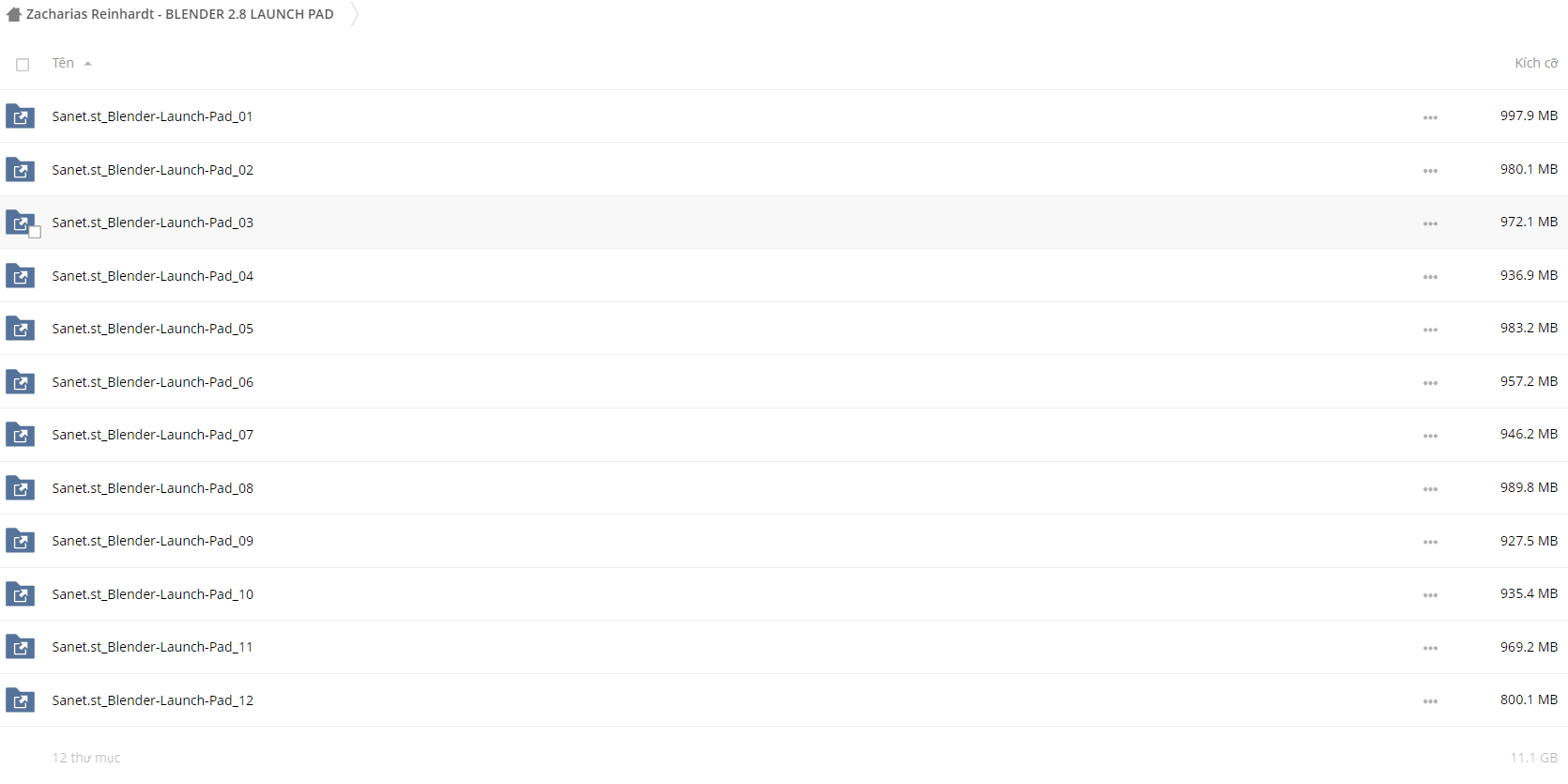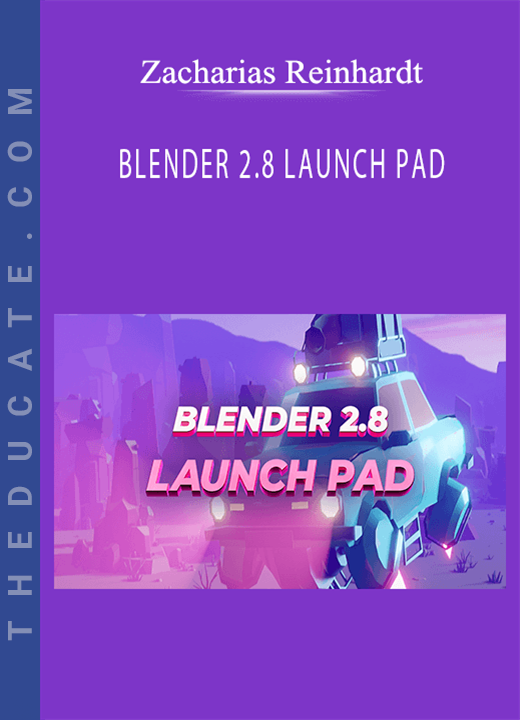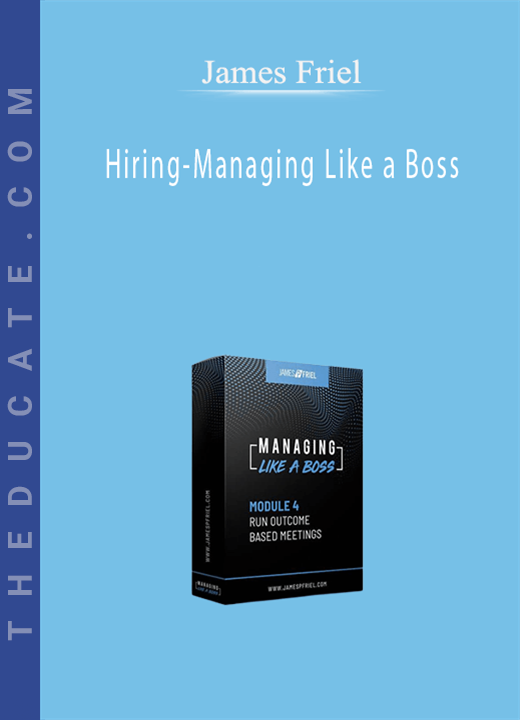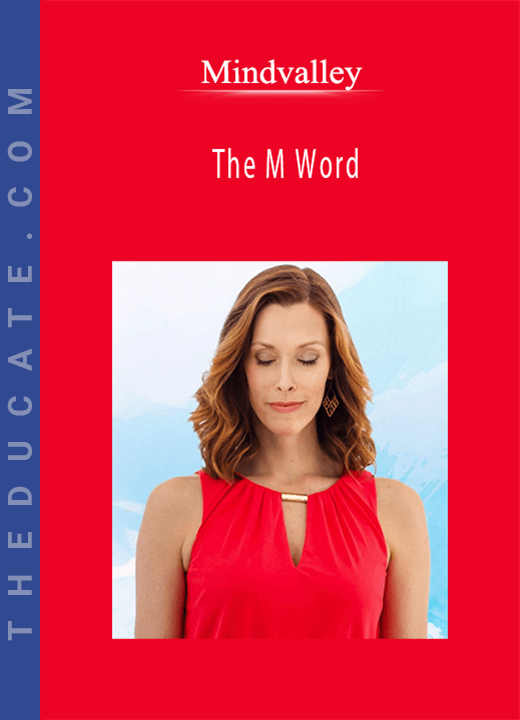Description

Zacharias Reinhardt – BLENDER 2.8 LAUNCH PAD
You want to become a 3D artist but you don’t know where to start?
Everything you need to get started in ONE place.
This course will teach you everything that is important to start your journey as 3D artist. All the crucial fundamental principles, tools, settings and workflows are explained and you will learn a full pipeline to create simple yet beautiful 3D animations, step by step and easy to understand. No need for gathering online videos from different sources to get started.
Suitable for absolute beginners.
You don’t know anything about 3D or Blender yet or you just started out? No problem. This course will take you by the hand right from the start and will guides you through the dense 3D jungle. If you have some experience already, this course will help you to fill in the missing gaps and smoothly enter the new and exciting land of Blender 2.8.
Thorough structured.
A whooping amount of 15 hrs of content awaits you. To make this easy to chew, we split the course into 15 chapters and ~200 short videos, mostly between 2 and 10 minutes long.
High quality.
All videos are in Full HD 1080p / MP4 format with English audio and captions. The course is available for streaming and download, including all important project files.
Get help along the way.
We give our best to make each lesson as clear and understandable as possible. If it still happens, that you got stuck at any point, you can ask for help or share your work in progress in the discussion section under each lecture.
Join the community.
Additionally, you get access to an exclusive Facebook group dedicated to our academy students only. There you can ask questions, share your renders and give or receive feedback from us or the other students.
Course Curriculum
1.0 – Getting Started
Download Chapter 1 [6/17/20] 1.1 – Welcome to the Course (6:44)
1.2 – Download Blender (2:57)
1.3 – Download Blender Shortcut PDF (2:17)
1.4 – Blender 2.8 Beta User Interface Changes (4:14)
1.5 – Community & Support
1.6 – Tools and System Info
1.7 – How to send your Blender file to CG Boost [6/17/20] (2:36)
2.0 – User Interface Fundamentals
Download Chapter 2
2.1 – Understanding 3D Space (1:57)
2.2 – Understanding the User Interface (2:08)
2.3 – User Interface – Default User Interface (5:24)
2.4 – User Interface – The structure of an editor (3:56)
2.5 – User Interface – Editor Types (4:39)
2.6 – User Interface – Adjusting the User Interface (5:20)
2.7 – User Interface – Workspaces (5:51)
2.8 – User Interface – 10 User Interface Pro Tips (7:51)
2.9 – User Interface – Working with shortcuts (1:45)
2.10 – Navigation – Rotate, Pan and Zoom (1:24)
2.11 – Navigation – Viewpoints (3:16)
2.12 – Navigation – Perspective and Orthographic Projection (3:21)
2.13 – Navigation – Camera View (1:27)
2.14 – Navigation – Walk Navigation (3:40)
2.15 – Navigation – Solving Navigation Problems (5:59)
2.16 – Saving and Opening Files (6:11)
2.17 – Preferences (8:32)
3.0 – 3D Object Fundamentals
Download Chapter 3
3.1 – How Blender works deep inside (10:33)
3.2 – Selection – Select Tool (3:11)
3.3 – Selection – Select Box Tool (2:24)
3.4 – Selection – Select Circle Tool (1:57)
3.5 – Selection – Select Lasso Tool (1:02)
3.6 – Selection – More Selection Tools (4:01)
3.7 – Selection – Active and Passive Selection (3:55)
3.8 – Transformation – Move Tool (3:51)
3.9 – Transformation – Rotate Tool (1:57)
3.10 – Transformation – Scale Tool (2:22)
3.11 – Transformation – Transform Orientation (3:01)
3.12 – Transformation – Viewport Gizmos (4:05)
3.13 – Transformation – Solve Transformation Problems (1:38)
3.14 – Transformation – Transform Properties (4:12)
3.15 – Transformation – Pivot Point (3:07)
3.16 – Transformation – Snapping (4:27)
3.17 – Transformation – Randomize Transform (2:44)
3.18 – Transforming the right way (3:23)
3.19 – Modes (4:22)
3.20 – Operator Panel (1:53)
3.21 – Adding and removing 3D Objects (4:37)
3.22 – 3D Object Types (6:44)
3.23 – 3D Cursor (6:11)
3.24 – Joining and Separating 3D Objects (1:57)
3.25 – Parenting 3D Objects (4:53)
3.26 – Manipulating the Origin (5:00)
3.27 – Smooth and Flat Shading (2:58)
3.28 – Units (4:43)
3.29 – Scene Organization (Outliner) (12:42)
3.30 – Viewport Overlays (3:52)
3.31 – Wireframe Viewport Shading (5:10)
3.32 – Solid Viewport Shading (9:54)
4.0 – Modeling Fundamentals
Download Chapter 4
4.1 – How to model Everything? (3:34)
4.2 – Object vs Edit Mode (3:16)
4.3 – Vertices, Edges and Faces (1:44)
4.4 – Tris, Quads and Ngons (0:51)
4.5 – Understanding Topology (10:52)
4.6 – Understanding Normals (5:07)
4.7 – Edit Mode – Selection and Transformation (5:29)
4.8 – Edit Mode – Adding and Removing Elements (2:55)
4.9 – Edit Mode – Dissolve Options (2:42)
4.10 – Edit Mode – Multi-Object Editing (4:43)
4.11 – Edit Mode – Extrude Tools (7:12)
4.12 – Edit Mode – Inset Faces Tool (2:50)
4.13 – Edit Mode – Bevel Tool (2:47)
4.14 – Edit Mode – Loop Cut Tools (3:47)
4.15 – Edit Mode – Knife Tool (4:29)
4.16 – Edit Mode – Bisect Tool (2:44)
4.17 – Edit Mode – Poly Build Tool (1:28)
4.18 – Edit Mode – Spin Tools (6:25)
4.19 – Edit Mode – Smooth, Randomize and Subdivide Tools (4:07)
4.20 – Edit Mode – Vertex and Edge Slide Tools (2:28)
4.21 – Edit Mode – Shrink/Fatten Tool (2:57)
4.22 – Edit Mode – Shear Tool (2:15)
4.23 – Edit Mode – Rip Region/Edge Tools (2:57)
4.24 – Annotate Tools (4:30)
4.25 – Measure Tool (2:36)
4.26 – Proportional Editing (4:20)
4.27 – Quad View (2:56)
4.28 – Solving Modeling Problems – Overlapping Geometry (3:34)
4.29 – Solving Modeling Problems – Object Scale (4:03)
4.30 – Solving Modeling Problems – Wrong Normals (2:01)
4.31 – Solving Modeling Problems – Linked Data (2:11)
4.32 – Solving Modeling Problems – Scene Size (2:19)
4.33 – Understanding Modifiers (6:02)
4.34 – Array Modifier (5:10)
4.35 – Bevel Modifier (7:52)
4.36 – Boolean Modifier (2:59)
4.37 – Bool Tool Add-on (4:56)
4.38 – Mirror Modifier (5:40)
4.39 – Solidify Modifier (3:49)
4.40 – Subdivision Surface Modifier (6:44)
4.41 – Understanding Curves (9:34)
4.42 – Understanding 3D Text (4:14)
4.43 – Modeling Techniques (6:12)
5.0 – Exercise: Modeling a Sci-fi Car Scene
Download Chapter 5
5.1 – Finding a good Idea for your 3D Artwork (8:59)
5.2 – PureRef (8:43)
5.3 – Adding Reference Images to the 3D Viewport (6:50)
5.4 – Preparing the Car Scene (4:54)
5.5 – Car Body Part 1 (10:41)
5.6 – Car Body Part 2 (9:04)
5.7 – Car Body Part 3 (8:49)
5.8 – Car Details – Fenders (5:08)
5.9 – Car Details – Lamps (5:05)
5.10 – Car Details – Bumpers (3:32)
5.11 – Car Details – Carrier (3:07)
5.12 – Car Details – Side Mirrors and Door Handles (2:34)
5.13 – Car Details – Sci-fi Engine (4:00)
5.14 – Car Details – Nozzles (9:56)
5.15 – Car Details – Cables (2:07)
5.16 – Car Details – Luggage (5:49)
5.17 – Car Details – Smooth and Sharp Edges (10:04)
5.18 – Environment – Rocks (7:27)
5.19 – Environment – Rock Formations (9:19)
5.20 – Environment – Trees (5:02)
5.21 – Environment – Grass (3:05)
6.0 – Shading Fundamentals
Download Chapter 6
6.1 – What is Shading? (1:41)
6.2 – LookDev Viewport Shading (5:02)
6.3 – Adding and Removing Materials (7:42)
6.4 – Important Shaders (7:36)
6.5 – Principled Shader (5:48)
6.6 – Shader Editor Basics (8:26)
6.7 – Shader Editor – Random Color Exercise (3:57)
7.0 – Exercise: Shading a Sci-fi Car Scene
Download Chapter 7
7.1 – Car – Base Materials Part 1 (4:02)
7.2 – Car – Base Materials Part 2 (10:35)
7.3 – Car – Glowing Materials (4:25)
7.4 – Car – Damage Materials (10:04)
7.5 – Environment Materials (11:10)
8.0 – Particle Fundamentals
Download Chapter 8
8.1 – What are Particles? (4:01)
8.2 – Adding and Removing Particles (4:07)
8.3 – Emitter Particle Settings (8:45)
8.4 – Particle Collision (3:41)
8.5 – Hair Particle Settings (for placing 3D Objects) (7:00)
8.6 – Weight Painting and Vertex Groups (10:24)
8.7 – Force Fields (5:06)
8.8 – Solving Particle Problems (6:14)
9.0 – Exercise: Assembling a Sci-fi Car Scene
Download Chapter 9
9.1 – Assembling all assets into one file (3:26)
9.2 – Environment – Large Rocks (Particle System) (6:34)
9.3 – Environment – Small Rocks and Vegetation (Particle System) (8:46)
10.0 – Lighting Fundamentals
Download Chapter 10
10.1 – How Lighting works in 3D (2:44)
10.2 – Rendered Viewport Shading (2:17)
10.3 – Adding and Removing Lights (3:29)
10.4 – Light Types and Settings (6:47)
10.5 – Shadow Settings (11:55)
10.6 – World Lighting (HDRI) (6:07)
10.7 – Indirect Lighting (3:16)
10.8 – Volumetric Lighting (9:12)
11.0 – Exercise: Lighting a Sci-fi Car Scene
Download Chapter 11
11.1 – HDRI Background Lighting (4:47)
11.2 – Volumetric Fog (4:25)
11.3 – Sun Light (4:00)
11.4 – Car Lights (5:45)
11.5 – Rim Light (2:28)
12.0 – Animation Fundamentals
Download Chapter 12
12.1 – How Animation works in 3D? (3:15)
12.2 – Animating 3D Objects (4:30)
12.3 – Animating Properties (2:53)
12.4 – Animating Shapes (2:34)
12.5 – Timeline (6:40)
12.6 – Dope Sheet Editor (3:52)
12.7 – Graph Editor Exercise Part 1 – Bouncing Ball (12:06)
12.8 – Graph Editor Exercise Part 2 – Squeeze and Stretch (3:25)
12.9 – Keyframe Interpolation Modes (3:32)
12.10 – Animation Modifiers (Procedural Animation) (4:41)
12.11 – How to create great Animations? (2:14)
13.0 – Exercise: Animating a Sci-fi Car Scene
Download Chapter 13
13.1 – Setting up a Camera (6:59)
13.2 – Car Animation (8:38)
13.3 – Environment Animation (8:58)
13.4 – Camera Animation – Shot 1 (5:31)
13.5 – Camera Animation – Shot 2 (6:06)
13.6 – Camera Animation – Shot 3 (7:14)
13.7 – Camera Shake Animation (5:13)
13.8 – Car Crash Animation Part 1 (6:11)
13.9 – Car Crash Animation Part 2 (7:06)
14.0 – Rendering Fundamentals
Download Chapter 14
14.1 – What is Rendering? (2:15)
14.2 – Rendering Still Images (5:35)
14.3 – Render Output Settings (10:14)
14.4 – EEVEE Render – Sampling (1:57)
14.5 – EEVEE Render – Ambient Occlusion (1:44)
14.6 – EEVEE Render – Bloom (2:04)
14.7 – EEVEE Render – Depth of Field (2:18)
14.8 – EEVEE Render – Subsurface Scattering (2:28)
14.9 – EEVEE Render – Screen Space Reflections (3:38)
14.10 – EEVEE Render – Motion Blur (1:35)
14.11 – Cycles Render Basics (9:27)
14.12 – Workbench Render Basics (3:13)
14.13 – Rendering the 3D Viewport (1:42)
14.14 – Color Management (Artistic Approach) (2:32)
15.0 – Exercise: Rendering a Sci-fi Car Scene
Download Chapter 15
15.1 – Rendering the Car Animation (14:25)
15.2 – Converting an Image Sequence to a Video (2:52)
15.3 – Conclusion (3:13)
15.4 – Feedback







5 reviews for Zacharias Reinhardt – BLENDER 2.8 LAUNCH PAD
There are no reviews yet.